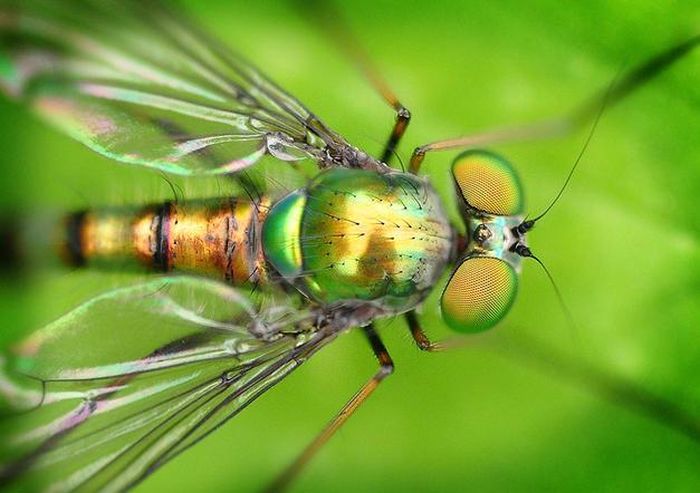|
|
Insect Macro Photography
|
Insects were the earliest organisms to produce and sense sounds. Insects make sounds mostly by mechanical action of appendages. In grasshoppers and crickets, this is achieved by stridulation. Cicadas make the loudest sounds among the insects by producing and amplifying sounds with special modifications to their body and musculature. The African cicada Brevisana brevis has been measured at 106.7 decibels at a distance of 50 cm (20 in). Some insects, such as the hawk moths and Hedylid butterflies, can hear ultrasound and take evasive action when they sense that they have been detected by bats. Some moths produce ultrasonic clicks that were once thought to have a role in jamming bat echolocation. The ultrasonic clicks were subsequently found to be produced mostly by unpalatable moths to warn bats, just as warning colorations are used against predators that hunt by sight. Some otherwise palatable moths have evolved to mimic these calls.
Very low sounds are also produced in various species of Coleoptera, Hymenoptera, Lepidoptera, Mantodea, and Neuroptera. These low sounds are simply the sounds made by the insect's movement. Through microscopic stridulatory structures located on the insect's muscles and joints, the normal sounds of the insect moving are amplified and can be used to warn or communicate with other insects. Most sound-making insects also have tympanal organs that can perceive airborne sounds. Some species in Hemiptera, such as the corixids (water boatmen), are known to communicate via underwater sounds. Most insects are also able to sense vibrations transmitted through surfaces. For example, an insect is caught in a spider web and struggles to escape. The vibrations it produces are sensed by the spider, who is alerted to its presence. Through these vibrations, the spider can tell where on the web the insect is located, as well as how big it is.
Communication using surface-borne vibrational signals is more widespread among insects because of size constraints in producing air-borne sounds. Insects cannot effectively produce low-frequency sounds, and high-frequency sounds tend to disperse more in a dense environment (such as foliage), so insects living in such environments communicate primarily using substrate-borne vibrations. The mechanisms of production of vibrational signals are just as diverse as those for producing sound in insects.
Some species use vibrations for communicating within members of the same species, such as to attract mates as in the songs of the shield bug Nezara viridula. Vibrations can also be used to communicate between entirely different species; lycaenid (gossamer-winged butterfly) caterpillars which are myrmecophilous (living in a mutualistic association with ants) communicate with ants in this way. The Madagascar hissing cockroach has the ability to press air through its spiracles to make a hissing noise as a sign of aggression; the Death's-head Hawkmoth makes a squeaking noise by forcing air out of their pharynx when agitated, which may also reduce aggressive worker honey bee behavior when the two are in close proximity.
|
|









